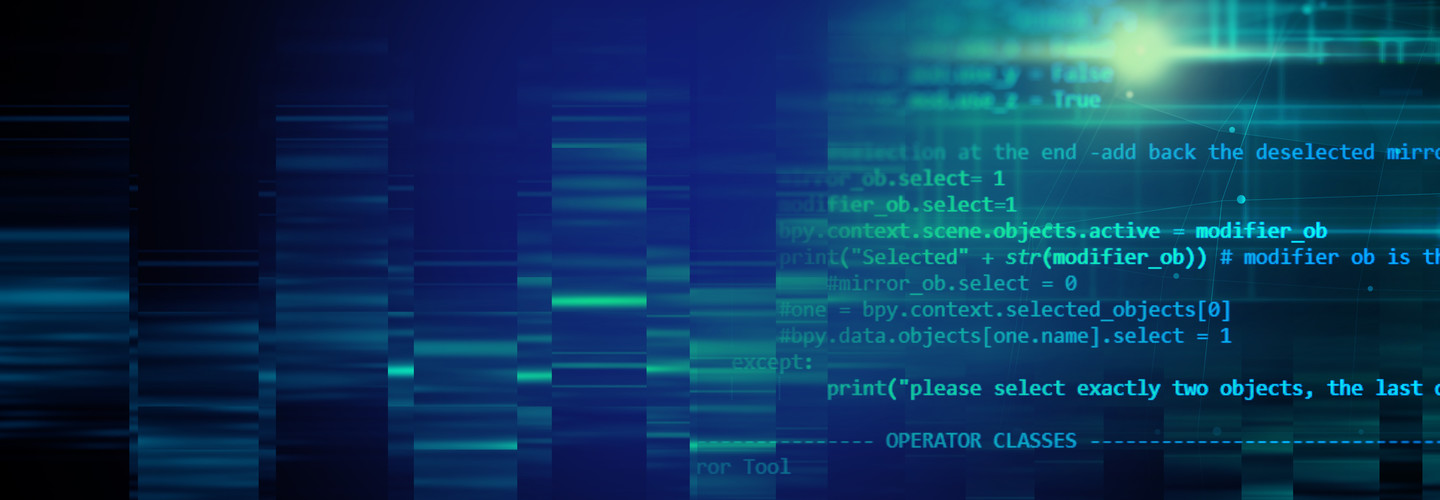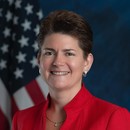For the past two years, Maria Roat has been serving as the deputy federal CIO. That position was her final stop in government career stretching more than 40 years, during which she made an indelible mark on federal IT. She retired on March 31.
As CIO at the Small Business Administration — filling a job that had been empty for close to a year — she led the agency’s modernization of outdated IT through a successful journey to the cloud. She’s been recognized as one of the top women in tech and most recently won WashingtonExec’s 2020 Chief Officer Award for Government CIO.
“We are grateful for Maria’s many contributions to our team, and we’re excited to see where her journey takes her next,” federal CIO Clare Martorana said in a statement.
For now, according to Roat, that will include hiking, seeing her family and “definitely taking a break.” In an interview with FedTech, she spoke about her stint as deputy federal CIO and where government modernization heads next.
FEDTECH: What were your biggest accomplishments as deputy federal CIO?
Roat: In addition to leading the office through an administration change, I focused on two projects during my time. One was seamless communications. The CIO Council identified interagency integration and collaboration as a priority for the federal government, especially with the pandemic. Agencies share many of the same environments in the cloud; why can I not chat with somebody at another agency? We funded and officially piloted a CIO Council project last year on what would it take to have interagency collaboration across the federal government.
We finished the pilot last July, and that told us that we didn't have a technical challenge. The challenges were nontechnical — records, security and privacy — and we laid out a plan to get those barriers out of the way. For example, It turned out that the National Archives and Records Administration already had guidance for collaboration tools and how to handle records. It just needed to be updated, and NARA is working on that.
There were minimal technology changes. It was a capability that was already turned on by default in the cloud, and agencies had turned it off. There were a number of short-term actions, including turning on federation, whitelisting each other, agreeing on one MOU so agencies could collaborate. The technical configuration was the simple piece.
So, they needed to flip it back on again, and then whitelist everybody’s agencies so that they could collaborate. The technical piece was the simpler piece.
When I retired, more than half the agencies that were federated could chat, share calendars and collaborate with each other’s environments. I always thought interagency collaboration would be a game changer for the federal government.
Click the banner below to get access to exclusive emerging tech content by becoming an Insider.
FEDTECH: What about your second project?
Roat: Working at multiple agencies throughout my career, I needed to support a process called CPIC, capital planning and investment control. And I never really got value out of it. As a CIO, I was reporting data to the Office of Management and Budget on my major investments, and I never knew what OMB did with the data, if anything, other than put it up on ITDashboard.gov. I realized while I was CIO at SBA that a quarter to a third of my IT spending was not reported to OMB because of the CPIC focus only on major investments and not the whole IT investment portfolio.
A few years ago, the federal government started leveraging the Technology Business Management taxonomy. While I was at the Small Business Administration, using that taxonomy and building models, I had four years of data, and I was able to see my spending shift over time as I modernized — moved out of data centers, moved into the cloud, adjustments like that. I really used that data. I could see trends over time with the data and was at the point where I was starting to do benchmarks and adjust the models to be able to do predictions based on the models and trending, and that was of significant value to me. The CFO was a partner with me on this journey, and he gained significant insights as well as we shifted from capital to operational expenses.
Taking on my role at OMB and working with the CIO Council, we took on what I affectionately called “blowing up CPIC.” I wanted to understand why we collected what we did. The council took on a project that lasted about four months to understand the use cases for an improved approach to overall IT portfolio management. What came out of that was an actual action plan that looked at the full lifecycle of an agency’s IT portfolio, identifying useful KPIs, and how data could be used for benchmarking.
We eliminated about 100 or so data fields that we were collecting from the agencies, and we began standardizing data collection using the taxonomy. Standardized data elements meant OMB was collecting the same data consistently. That allows us to start capturing the entire IT portfolio, not just major investments. The work we did in calendar year 2021 really set the stage for the long term to get us to standardized capabilities and a taxonomy to look holistically at the entire IT portfolio. In two to three years, the data will be richer and has the potential to inform strategic budget development for better IT spending planning and forecasting.
FEDTECH: What’s the biggest change you’ve noticed over time in the way the government uses and deploys technology?
Roat: I like that agencies are running pilots — taking six weeks or even eight or 12 weeks to develop capabilities for the mission, and including the end users in the solution. You want to do a modernization project? You want to try a new tool and a new capability? Run a pilot in a series of sprints. If it doesn’t work, fine, move on without spending millions of dollars. You didn’t see that as much 10 years ago. Additionally, the government is doing so much more to leverage its data, use the cloud for scalability, and leverage capabilities such as machine learning and AI.
DISCOVER: How HPC solutions are helping agencies handle big-data jobs.
FEDTECH: The pandemic changed the way government looks at and uses technology. What changes came about because of the pandemic that will probably stick?
Roat: For the benefit of CIOs across the federal government, one that I would love to see stick is getting the bureaucracy out of the way. During the pandemic, especially in the first several months, CIOs working with their peers and CFOs on acquisition were able to get a lot done very quickly. I would love to continue to see more of that across the federal government, to continue to break down the silos to ultimately better serve the public much more rapidly and effectively.
Data sharing that occurred throughout the pandemic is something that will endure. And I don’t mean moving data from one agency to another. Sometimes, you only need access to do a validation or a verification. You have a question to ask, the other agency has the information. At the Small Business Administration, I tried to work with the IRS because I needed to verify a small business’s tax number, and I wanted to ask the IRS, “Can you validate that this is a business? Yes or no?” But they couldn’t do it, they said, because of legal restrictions. So, when I say data sharing, I don’t need visibility into everything. I’m giving you a piece of information and asking if you can validate it. The federal government is a system of systems — not technical systems, but business systems working together. The CDO Council is tackling data maturity, and I see data access and sharing improving as the government concurrently works to improve its cross-agency services to the public.
FEDTECH: In terms of the citizen experience, how is technology bringing the citizen closer to government services? How do you think it will continue to evolve?
Roat: I view the federal government as one big enterprise. There is an opportunity to provide an integrated and personalized set of services. The customer experience executive order set the stage for service providers to simplify how they interact with the public. Couple those high-impact service providers that provide benefits with two or three other agencies to deliver the integrated service. And again, access to data is foundational to having a personalized set of services.
A couple of years ago, for example, the H-1B visa program needed improvement, as it was largely paper-based, and the Technology Modernization Fund provided investment to modernize the process. In that program, the Department of Labor works with the Department of State, U.S. Citizenship and Immigration Services and the U.S. Department of Agriculture. It was taking more than 30 days to process visa applications for farm workers. Those four agencies, working together, cut that down to about a day. For farmers, it made a big difference. They can’t wait 45 days for workers to be approved, because the crops are going to die.
Ultimately, regardless of what it is, improving customer experience is going to make somebody’s life easier. The government can start with one or two life experiences and use the lessons learned to you build out other capabilities. One step at a time with pilots and prototypes to get to even more integrated and personalized seamless services. Having an enterprise view of the federal government is crucial.
EXPLORE: How federal agencies can benefit from emerging cloud trends.
FEDTECH: Lack of funding is the most obvious obstacle to IT modernization. What are some other hurdles?
Roat: One-year money versus multiyear money. This is so foundational. A CIO or agency can have a strategic plan for modernization that will take multiple years to accomplish, but there isn’t multiyear funding to be able to plan appropriately. Continuing resolutions year after year make it even harder. As the IT portfolio management project I mentioned earlier matures and gathers better data, it can inform multiyear technology spending that aligns with strategic plans.
I also think that we can better partner with the business side of an agency so that they understand how technology can better enable the agency’s mission. The hardest part for business owners is to articulate in one sentence what problem they’re trying to solve. If they can tell me what the problem is, I will figure out what technology will help them solve their problem.
FEDTECH: What’s the most important piece of modernization that still needs to take place within the federal government?
Roat: Modernization has to be continuous. It has to be a sustained and constant improvement. You can modernize a system and then do nothing else, but then six months later, now you’re behind again. You can’t just build something and then let it sit. Sustained continuous modernization has to continue and be funded consistently so that you can continue to improve what you’ve already built and worked on. Otherwise, you’re going to get back to having 10-year-old systems. You don’t want to be in that position. This circles back to better IT portfolio management and having data that informs planning and supports continuous modernization.
FEDTECH: Do you have any final messages?
Roat: I would give a huge shout out to the entire IT workforce. Often, the public doesn’t understand how hard federal employees work to provide services that they take for granted. The government needs better marketing. From my lens, the IT workforce, the hours they put in, the overnights that they pulled during the pandemic working to get funding out and cybersecurity, all of it — I think a shout out is due.











